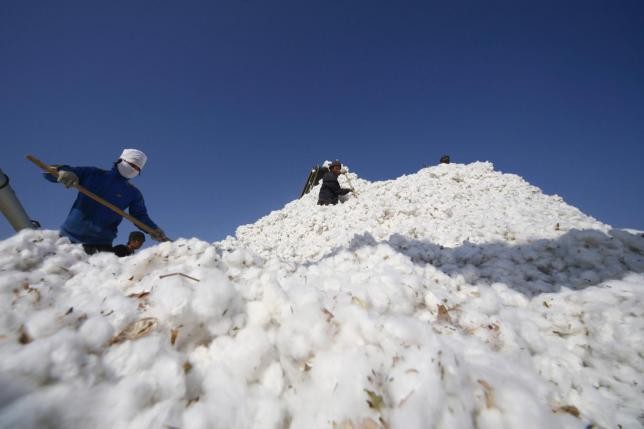The volume of cotton traded in a single day on the Zhengzhou Commodity Exchange last week reached the equivalent of 41 million bales, enough to produce about 9 million pairs of jeans or at least one for every person on the planet, according to a Bloomberg report.
The report said that prices rose almost 19 percent in four days before the trading spike on Friday, April 22, while it registered its lowest price in February.
Commodity exchanges have boosted margins and fees or warned investors as trade volumes in Chinese commodity markets soared, which reminded traders of the equities rally last year.
"Record low levels in February and March sparked buying interest from both inside and outside of the cotton industry and also triggered speculation, which resulted in mounting bets in Zhengzhou futures," Liu Qiannan, a Beijing-based cotton analyst at Galaxy Futures Co., said. "With massive investment and encouragement from the crazy steel and iron ore market in China, sentiment then turned to bullish from bearish."
According to the National Cotton Council of America, more than 3.6 million contracts of 5 metric tons of cotton were traded in Zhengzhou on April 22, close to about 9 million tons, or 41 million bales, as Chinese exchanges doubled their counting volume to balance the trade, with one bale enough to produce 215 pairs of jeans.
On ICE Futures U.S. in New York, about 1.6 billion pounds of cotton were traded on the same day, equivalent to about 3.3 million bales, or more than 700 million pairs of jeans, enough to supply denim to Brazil, Japan and the U.S.
As the world's largest consumer of cotton and second-biggest producer, China has been focused on its cotton purchases since 2011, setting a minimum price and storing cotton to support Chinese growers, which caused the futures commodity to rise to an all-time high in March that year. But this year in September, the contract rose 11.5 percent, reaching 12,705 yuan ($1,955) per ton.
This week, the Zhengzhou exchange responded to the trading frenzy by raising trading charges for cotton futures from 4.3 yuan to 6 yuan per lot as it planned to raise margin requirements and daily trading for all futures on May 1.
The report said that trading for commodities futures in China has become more expensive for traders as a result of the steps taken by Zhengzhou and other bourses, while the surge in speculative trading caught the world markets by surprise as trading activity for cotton, eggs, steel and iron ore, spiked, Morgan Stanley said.
Meanwhile, the surge in speculative trading in Chinese iron ore futures has become a cause for concern for Goldman Sachs Group Inc., which noted that the large daily volume could exceed annual imports.



























